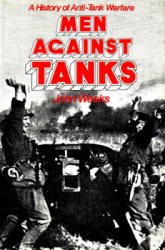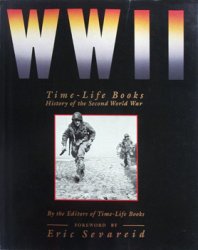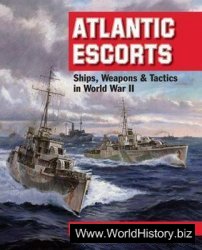Kaesong. Chosen by the communists as the site of the Korean War armistice negotiations in July
1951. In October 1951, at the insistence of the UN Command, the talks were transferred to the village of Panmunjom to the south.
Kaga. Japanese aircraft carrier. Launched as a battleship; cancelled under the Washington Treaty. Completed as carrier 1928; reconstructed 1934—35; 43,650 tons full load, 90 aircraft. Took part in Pearl Harbor, Java and Darwin attacks. Sunk by dive-bombers at Midway (1942).
Kaiser, Henry John (1882-1967). US. Industrialist who developed the assembly-line techniques - including prefabrication and simplified welding - that made possible the Liberty/Victory ship programmes of World War II.
Kaiserschlacht see march offensive, GERMAN (l918).
Kaiten. Japanese suicide weapon: a “Long Lance” torpedo lengthened to incorporate a one-man cockpit. Launched from a submarine or surface warship to steer a ramming course: maximum range
85,300yd (78,000m) at 12 knots; 3,4181b (1,550kg) impact-fuzed
Warhead. Some 150 kaiten were launched, 1944-45, sinking a destroyer-escort and a fleet oiler and damaging at least five other ships.
Kalabakan see malaysia-
INDONESIA CONFRONTATION.
Kaltenbrunner, Lt Gen {SS-Obergruppenfuhrer) Dr Ernst
(1903—46). Austrian. A former leader of the Austrian SS; became head of Reichssicherheitshauptamt (rsha), the Reich Central Security Office, January 30 1943. His office controlled most of the Nazi organs of persecution and repression. He was executed for war crimes.
Kamikaze. The term most often used in the West to describe Japanese suicidal operations and weapons, principally aircraft, of World War II. Kamikaze (“divine wind”) refers to the typhoon that saved Japan from invasion in the 13th century by destroying a Mongol fleet. Japanese prefer the term shimpu: the Imperial Navy’s suicide squadrons were known as Shimpu Tokubetsu Kogekitai (“Divine Wind Special Attack Force”), and toku or tokko (“special”) was frequently used as a euphemism for suicidal operations.
Kamikaze acts by individuals and up to unit level occurred throughout the war, but “official” kamikaze air units, formed by Vice Adm Onishi, were not sent into action until October 25 1944, at Leyte Gulf. The major commitment was at Okinawa, March-August 1945: 10 kikusui (“floating crysanthemum”) mass kamikaze attacks and many smaller sorties sank 20 Allied ships (including 9 destroyers) and damaged 217, while conventional air attacks sank only 6 and damaged 45. According to a Japanese estimate, 2,409 naval and 2,206 army pilots died as kamikaze.
Other weapons used in kamikaze operations included the ohka piloted bomb; several types of midget submarine; the kaiten manned-torpedo; and the shinyo (ijn) and maru-ni (ija) explosive motorboats. By August 1945, suicidal weapons of all kinds - including c5,300 kamikaze aircraft and ohka, c520 midget submarines and kaiten and c4,000 explosive motorboats were deployed in the Japanese home islands to meet the expected Allied invasion. RO’N.
Kammhuber, Gen Josef (1896
1987). Ger. Commander of the German night fighter force 194043.
Kammhuber Line. Linear system of German night air defence devised by Kammhuber in 1940. Consisted of a series of “boxes” each containing a Himmelbett, night fighter and searchlight support, extending across the likely Bomber Command approaches. By 1943, the Line reached from Jutland to the Mediterranean.
Kampuchea see cambodia, wars
SINCE INDEPENDENCE.
Kangaroo. Armoured Personnel Carrier based on RAM chassis. See
Also TANKS.
Kansas Line, un defence line during the Korean War, running beyond the 38th Parallel from the Imjin river in the west to just beyond Kansong in the east. It was gained in April 1951 after a series of counteroffensives had driven the enemy from South Korea and recaptured Seoul. The Chinese spring offensives forced the Eighth Army back on No-Name-Line just north of Seoul, but by June it had regained the Kansas Line and moved on in the central sector to the Wyoming Line which controlled the base of the Iron Triangle (Chorwon, Kumhwa, Pyonggang), an area important for east-west communications. The military position was further improved by a series of local offensives in the early autumn of 1951, which created the battleline on which the armistice was later concluded.
Kapyong river, Battle of the
(1951). Occurred 40 miles (64km) northeast of Seoul during the Korean War. The 27th Commonwealth Infantry Brigade, in a defensive position astride a bend in the river, north of Chongchon-Ni, was attacked by the Chinese on April 23—25 1951 during the first phase of the communist spring offensive. After heavy fighting, in which the Brigade was supported by US tanks, the enemy withdrew on April 25. The battle was the last fought by the Brigade, which was relieved by the 28th Commonwealth Infantry Brigade. CM.
Karch, Brig Gen Frederick J (b.
1917). US. Commanded first integral US ground combat unit in Vietnam, 9th Marine Expeditionary Brigade, which landed at Da Nang on March 8 1965 to provide security for Da Nang air base.
Karee Siding, Battle of (March 29 1900), Second Boer War. Some
3,500 Boers under De La Rey occupied high ground commanding the Central Railway about 18 miles (29km) north of Bloemfontein. Attacked by 9,000 British troops (losses 182), the Boers were forced from their positions and the way was cleared for Roberts’ advance up the railway to Kroonstadt, new capital of the Orange Free State, and thence to Pretoria. De La Rey lost only 34 men. RO’N.
Karelian Isthmus see Finland,
RUSSIAN INVASION OF.
Kashmir see india-pakistan wars.




 World History
World History









